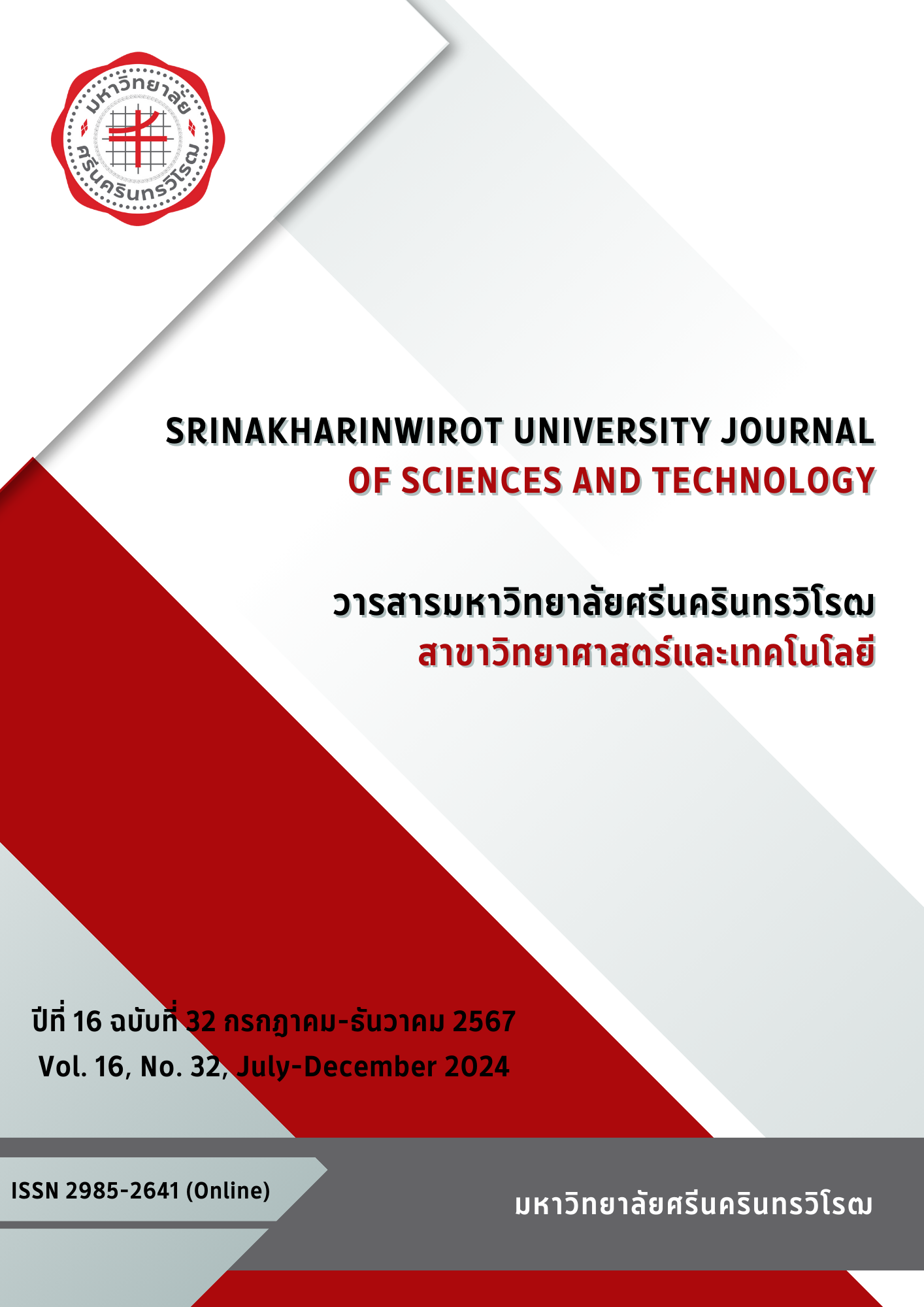การศึกษาเปรียบเทียบผลการรักษาทางกายภาพบำบัดต่อระยะทางการเดินด้วย Incremental Shuttle Walk ในผู้ป่วยผ่าตัดกลีบปอดด้วยวิธีการส่องกล้องและการเปิดทรวงอก
คำสำคัญ:
การทดสอบด้วยการเดิน, การผ่าตัดกลีบปอด, การผ่าตัดแบบส่องกล้อง, การผ่าตัดแบบเปิดทรวงอกบทคัดย่อ
การศึกษาเกี่ยวกับผลการรักษาทางกายภาพบำบัดต่อระยะทางการเดินด้วย Incremental Shuttle Walk Test (ISWT) ในผู้ป่วยผ่าตัดกลีบปอดยังมีน้อยมาก การวิจัยนี้มีวัตถุประสงค์เพื่อศึกษาผลการรักษาทางกายภาพบำบัดต่อการเปลี่ยนแปลงของระยะทางการเดินด้วย ISWT ภายหลังการผ่าตัดกลีบปอดระหว่างกลุ่มที่ผ่าตัดด้วยวิธีการส่องกล้อง (VATS) และการเปิดทรวงอก (Thoracotomy) การวิจัยนี้เป็นการเก็บข้อมูลแบบย้อนหลังจากเวชระเบียนของผู้ป่วยที่ได้รับการตัดกลีบปอด และได้รับการรักษาทางกายภาพบำบัดทั้งก่อนและหลังผ่าตัด ได้แก่ การฝึกหายใจการฝึกไอ และการออกกำลังกาย ตั้งแต่เดือนเมษายน พ.ศ. 2558 ถึงเดือนธันวาคม พ.ศ. 2563 ณ สถาบันโรคทรวงอก และได้รับการทดสอบด้วยการเดิน ISWT ในช่วงก่อนผ่าตัด ช่วงหลังผ่าตัดในวันที่ออกจากโรงพยาบาล และ 2 สัปดาห์หลังออกจากโรงพยาบาล นำข้อมูลระยะทางการเดินด้วย ISWT ของผู้ป่วยผ่าตัดกลีบปอดในกลุ่มที่ผ่าตัดแบบ VATS และ Thoracotomy ทั้งสามช่วงเวลามาวิเคราะห์ด้วยสถิติ Two-way Mixed-ANOVA ผลการวิจัยพบว่า มีผู้ป่วยผ่าตัดกลีบปอดและได้รับการรักษาทางกายภาพบำบัด ผ่านเกณฑ์ จำนวน 190 คน ผ่าตัดด้วยวิธี VATS 125 คน และ Thoracotomy 65 คน ระยะทางการเดินด้วย ISWT ภายหลังผ่าตัดในวันที่ออกจากโรงพยาบาลลดลงอย่างมีนัยสำคัญทางสถิติ เมื่อเปรียบเทียบกับก่อนผ่าตัด (p<0.001) และสามารถฟื้นตัวกลับมาเท่ากับก่อนผ่าตัดได้ในช่วง 2 สัปดาห์หลังออกจากโรงพยาบาล เมื่อเปรียบเทียบระหว่างกลุ่มที่ได้รับการผ่าตัดแบบ VATS กับ Thoracotomy พบว่าในวันที่ออกจากโรงพยาบาล ระยะทางการเดินด้วย ISWT ของกลุ่มที่ได้รับการผ่าตัดแบบ VATS มีค่าลดลงน้อยกว่ากลุ่ม Thoracotomy และทั้งสองกลุ่มมีการฟื้นตัวกลับมาได้เท่ากับก่อนผ่าตัดในช่วง 2 สัปดาห์หลังออกจากโรงพยาบาล การวิจัยนี้สรุปได้ว่าผู้ป่วยผ่าตัดกลีบปอดด้วยวิธี VATS และ Thoracotomy ที่ได้รับการรักษาทางกายภาพบำบัด มีการลดลงของระยะทางการเดินด้วย ISWT ภายหลังการผ่าตัดแต่สามารถฟื้นตัวกลับมาเท่ากับก่อนผ่าตัดได้ภายใน 2 สัปดาห์หลังออกจากโรงพยาบาล
Downloads
เอกสารอ้างอิง
Montagne, F., Guisier, F., Venissac, N., and Baste, J. M. (2021). The role of surgery in lung cancer treatment: Present indications and future perspectives-state of the art. Cancers, 13(15), Article number 3711.
Landreneau, R. J., Hazelrigg, S. R., Mack, M. J., Dowling, R. D., Burke, D., Gavlick, J., Perrino, M. K., Ritter, P. S., Bowers, C. M., DeFino, J., Nunchuck, S. K., Freeman, J., Keenan, R. J., and Ferson, P. F. (1993). Postoperative pain-related morbidity: Video-assisted thoracic surgery versus thoracotomy. The Annals of Thoracic Surgery, 56(6), 1285-1289.
McKenna, R. J., and Houck, W. V. (2005). New approaches to the minimally invasive treatment of lung cancer. Current Opinion in Pulmonary Medicine, 11(4), 282-286.
He, J., and Xu, X. (2012). Thoracoscopic anatomic pulmonary resection. Journal of Thoracic Disease, 4(5), 520-547.
Boffa, D. J., Allen, M. S., Grab, J. D., Gaissert, H. A., Harpole, D. H., and Wright, C. D. (2008). Data from the society of thoracic surgeons general thoracic surgery database: The surgical management of primary lung tumors. The Journal of Thoracic and Cardiovascular Surgery, 135(2), 247-254.
Sasaki, N., Meyer, M. J., and Eikermann, M. (2013). Postoperative respiratory muscle dysfunction: Pathophysiology and preventive strategies. Anesthesiology, 118(4), 961-978.
Gerner, P. (2008). Post-thoracotomy pain management problems. Anesthesiology Clinics, 26(2), 355-367.
Kendall, F., Abreu, P., Pinho, P., Oliveira, J., and Bastos, P. (2017). The role of physiotherapy in patients undergoing pulmonary surgery for lung cancer. A literature review. Revista Portuguesa de Pneumologia, 23(6), 343-351.
Baddeley, R. A. (2016). Physiotherapy for enhanced recovery in thoracic surgery. Journal of Thoracic Disease, 8(Suppl 1), 107-110.
Ahmad, A. M. (2018). Essentials of physiotherapy after thoracic surgery: What physiotherapists need to know. A narrative review. Korean Journal of Thoracic and Cardiovascular Surgery, 51(5), 293-307.
Singh, S. J., Morgan, M. D., Scott, S., Walters, D., and Hardman, A. E. (1992). Development of a shuttle walking test of disability in patients with chronic airways obstruction. Thorax, 47(12), 1019-1024.
Singh, S. J., Morgan, M. D., Hardman, A. E., Rowe, C., and Bardsley, P. A. (1994). Comparison of oxygen uptake during a conventional treadmill test and the shuttle walking test in chronic airflow limitation. European Respiratory Journal, 7(11), 2016-2020.
Albouaini, K., Egred, M., and Alahmar, A. (2007). Cardiopulmonary exercise testing and its application. Postgraduate Medical Journal, 83(985), 675-682.
Lelis, J. D'., Chaves, G., Ghisi, G. L. D. M., Grace, S. L., and Britto, R. R. (2019). Validity of the incremental shuttle walk test to assess exercise safety when initiating cardiac rehabilitation in low-resource settings. Journal of Cardiopulmonary Rehabilitation and Prevention, 39(3), E1-E7.
Ha, D., Mazzone, P. J., Ries, A. L., Malhotra, A., and Fuster, M. (2016). The utility of exercise testing in patients with lung cancer. Journal of Thoracic Oncology, 11(9), 1397-1410.
Granger, C. L., Denehy, L., Parry, S. M., Martin, J., Dimitriadis, T., Sorohan, M., and Irving, L. (2015). Which field walking test should be used to assess functional exercise capacity in lung cancer? An observational study. BMC Pulmonary Medicine, 15, Article number 89.
Holland, A. E., Spruit, M. A., Troosters, T., Puhan, M. A., Pepin, V., Saey, D., McCormack, M. C., Carlin, B. W., Sciurba, F. C., Pitta, F., Wanger, J., MacIntyre, N., Kaminsky, D. A., Culver, B. H., Revill, S. M., Hernandes, N. A., Andrianopoulos,V., Camillo, C. A., Mitchell, K. E., Lee, A. L., Hill, C. J., and Singh, S. J. (2014). An official European Respiratory Society/American Thoracic Society technical
standard: Field walking tests in chronic respiratory disease. European Respiratory Journal, 44(6), 1428-1446.
Fennelly, J., Potter, L., Pompili, C., and Brunelli, A. (2017). Performance in the shuttle walk test is associated with cardiopulmonary complications after lung resections. Journal of Thoracic Disease, 9(3), 789-795.
Win, T., Groves, A. M., Ritchie, A. J., Wells, F. C., Cafferty, F., and Laroche, C. M. (2007). The effect of lung resection on pulmonary function and exercise capacity in lung cancer patients. Respiratory Care, 52(6), 720-726.
Brocki, B. C., Westerdahl, E., Langer, D., Souza, D. S. R., and Andreasen, J. J. (2018). Decrease in pulmonary function and oxygenation after lung resection. ERJ Open Research, 4(1), Article number 00055-2017.
Ichikawa, T., Yokoba, M., Horimizu, Y., Yamaguchi, S., Kawakami, A., Oikawa, S., Takeichi, H., Katagiri, M., and Toyokura, M. (2022). Recovery of respiratory muscle strength, physical function, and dyspnoea after lobectomy in lung cancer patients undergoing pulmonary rehabilitation: A retrospective study. European Journal of Cancer Care, 31(6), e13663.
Miserocchi, G., Beretta, E., and Rivolta, I. (2010). Respiratory mechanics and fluid dynamics after lung resection surgery. Thoracic Surgery Clinics, 20(3), 345-357.
Nomori, H., Horio, H., Naruke, T., and Suemasu, K. (2001). What is the advantage of a thoracoscopic lobectomy over a limited thoracotomy procedure for lung cancer surgery? The Annals of Thoracic Surgery, 72(3), 879-884.
Nagahiro, I., Andou, A., Aoe, M., Sano, Y., Date, H., and Shimizu, N. (2001). Pulmonary function, postoperative pain, and serum cytokine level after lobectomy: A comparison of VATS and conventional procedure. The Annals of Thoracic Surgery, 72(2), 362-365.
Bendixen, M., Jørgensen, O. D., Kronborg, C., Andersen, C., and Licht, P. B. (2016). Postoperative pain And quality of life after lobectomy via video-assisted thoracoscopic surgery or anterolateral thoracotomy for early stage lung cancer: A randomised controlled trial. The Lancet Oncology, 17(6), 836-844.
ดาวน์โหลด
เผยแพร่แล้ว
รูปแบบการอ้างอิง
ฉบับ
ประเภทบทความ
สัญญาอนุญาต
ลิขสิทธิ์ (c) 2024 วารสารมหาวิทยาลัยศรีนครินทรวิโรฒ สาขาวิทยาศาสตร์และเทคโนโลยี

อนุญาตภายใต้เงื่อนไข Creative Commons Attribution-NonCommercial-NoDerivatives 4.0 International License.
วารสารมหาวิทยาลัยศรีนครินทรวิโรฒ สาขาวิทยาศาสตร์และเทคโนโลยี อยู่ภายใต้การอนุญาต Creative Commons Attribution-NonCommercial-NoDerivs 4.0 International (CC-BY-NC-ND 4.0) เว้นแต่จะระบุไว้เป็นอย่างอื่น โปรดอ่านหน้านโยบายของวารสารสำหรับข้อมูลเพิ่มเติมเกี่ยวกับการเข้าถึงแบบเปิด ลิขสิทธิ์ และการอนุญาต



